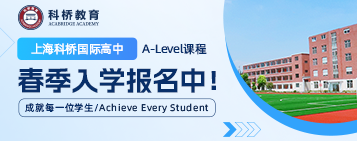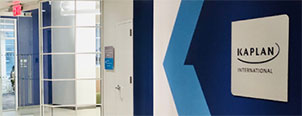Biological community托福听力原文翻译及问题答案
2024-04-02 17:44:39 来源:中国教育在线
Biological community托福听力原文翻译及问题答案
一、Biological community托福听力原文:
Narrator:Listen to part of a lecture in a Biology Class.FEMALE PROFESSOR:Okay⋯we've been talking till now about the two basic needs of a biological community:an energy source,to produce organic materials—you know,uh,“food”—for the organisms⋯and⋯the“waste-recycling”,or breakdown,of materials back into inorganic molecules⋯And about how all this requires photosynthesis—when green plants or microbes convert sunlight into energy⋯and also requires microorganisms—bacteria—to secrete chemicals that break down or“recycle”the organic material,to complete the cycle.So,now we’re done with this chapter of the textbook:we can just⋯review for the weekly quiz⋯and⋯move on to the next chapter,right?Well,not so fast⋯First,I'd like to talk about some discoveries that challenged one of these fundamental assumptions about what you need in order to have a biological community⋯and—well,there actually were quite a few surprises.It all began in 1977,with the exploration of hydrothermal vents on the ocean floor.Hydrothermal vents are cracks in the Earth's surface that occur—well—well,the ones we're talking about here are found deep at the bottom of the ocean⋯and these vents,on the ocean floor⋯they release this incredibly hot water—three to four times the temperature that you’d boil water at—because this water is being heated deep within the Earth.
Well.About thirty years ago,researchers sent a deep-sea vessel to explore the ocean's depths—about 3 kilometers down—way deep!—to the ocean floor.No one had ever explored that far down before—nobody expected there to be any life down there—because of the conditions.
First of all,sunlight doesn't reach that far down,so it’s totally dark.There couldn't be any plant or animal life—since there's no sunlight—no source of energy to make food.If there was any life at all,it'd just be some bacteria breaking down any dead materials that might’ve fallen to the bottom of the ocean.Ann?FEMALE STUDENT:And what about the water pressure?Didn't we talk before about how,the deeper down into the ocean you go,the greater the pressure?FEMALE PROFESSOR:Excellent point!And not only the extreme pressure,but also the extreme temperature of the water around these vents—if the lack of sunlight didn't rule out the existence of a biological community down there,then these factors certainly would⋯Or so they thought.MALE STUDENT:So you're telling us they did find organisms that could live under those conditions?!FEMALE PROFESSOR:They did indeed—something like three hundred different species!FEMALE STUDENT:But—but—how could that be?I mean—without sunlight—no energy—no,no—FEMALE PROFESSOR:What they discovered was that microorganisms—bacteria—had taken over both functions of the biological community—the recycling of waste materials,AND the production of energy;THEY WERE THE ENERGY SOURCE.
Y’see⋯it turns out that certain microorganisms are chemosynthetic;they don't need sunlight because they take their energy from chemical reactions.So,as I said,unlike green plants,which are photosynthetic,and get their energy from sunlight,these bacteria that they found at the ocean floor—these are chemosynthetic,which means that they get their energy from chemical reactions.How does this work?As we said,these hydrothermal vents are releasing into the ocean depths this intensely hot water—and⋯here's the thing:this hot water contains a chemical called hydrogen sulfide,and also a gas—carbon dioxide.Now,these bacteria actually combine the hydrogen sulfide with the carbon dioxide,and this chemical reaction is what produces organic material,which is the food for larger organisms.The researchers had never seen anything like it before!MALE STUDENT:Wow!So just add a chemical to a gas,and—bingo!—you've got a food supply?!
FEMALE PROFESSOR:Not just that—what was even more surprising were all the large organisms that lived down there.The most distinctive of these was something called the tube worm.Here,let me show you a picture⋯The“tube”of the tube worm is really really long—they can be up to one and a half meters long.And these“tubes”are attached to the ocean floor.Pretty weird-looking,huh?
And another thing—the tube worm has no mouth or digestive organs!So,you're asking,how does it eat?Well,they have these special organs that collect the hydrogen sulfide and carbon dioxide,and then transfer it to another organ⋯where billions of bacteria live.These bacteria that live inside the tube worms:the tube worms provide them with hydrogen sulfide and carbon dioxide,and the bacteria⋯well,the bacteria kind of“feed”the tube worms through chemosynthesis—remember?That chemical reaction I described earlier⋯
二、Biological community托福听力中文翻译:
旁白:在生物课上听一节课的一部分。女教授:好的⋯到目前为止,我们一直在讨论生物群落的两个基本需求:一种能源,用来生产有机材料,呃,“食物”——用于生物体⋯和⋯“废物回收”,或将材料分解成无机分子⋯当绿色植物或微生物将阳光转化为能量时,这一切是如何需要光合作用的⋯还需要微生物细菌分泌化学物质,分解或“循环”有机物质,以完成循环。那么,现在我们讲完课本的这一章:我们可以⋯每周测验复习⋯和⋯继续下一章,对吗?嗯,没那么快⋯首先,我想谈谈一些发现,这些发现挑战了一个基本假设,即为了建立一个生物群落,你需要什么⋯事实上,有很多惊喜。这一切都始于1977年,当时人们在海底探索热液喷口。热液喷口是地球表面的裂缝,发生得很好,我们在这里讨论的是在海底深处发现的⋯海底的这些通风口⋯它们释放出的热水是你烧开水温度的三到四倍,因为这些水在地球深处被加热。
好大约30年前,研究人员派遣了一艘深海船去探索3公里深处的海洋-到海底。由于条件的原因,在没有人预料到那里会有生命之前,从来没有人探索过那么远的地方。
首先,阳光照射不到那么远,所以它是完全黑暗的。因为没有阳光,没有制造食物的能源,所以不可能有任何植物或动物的生命。如果真的有生命的话,那一定是一些细菌分解掉了任何可能沉入海底的死亡物质。安?女学生:那么水压呢?我们之前不是说过,你进入海洋越深,压力就越大吗?女教授:很好!不仅是极端的压力,还有这些喷口周围的极端水温如果缺乏阳光不排除那里生物群落的存在,那么这些因素肯定会⋯或者他们是这么想的。男学生:那么你是说他们确实发现了可以在这种条件下生存的生物?!女教授:他们确实做了300种不同的物种!女学生:但那怎么可能呢?我的意思是没有阳光,没有能源,没有女教授:他们发现微生物细菌已经接管了生物群落的两个功能——废物的回收和能源的生产;它们是能源。
你看⋯结果表明,某些微生物是化学合成的;它们不需要阳光,因为它们从化学反应中获取能量。正如我所说,与绿色植物不同的是,绿色植物是光合的,从阳光中获取能量,而在海底发现的这些细菌是化学合成的,这意味着它们从化学反应中获取能量。这是怎么回事?正如我们所说,这些热液喷口正在向海洋深处释放强烈的热水⋯事情是这样的:这种热水含有一种叫做硫化氢的化学物质,还有一种气体二氧化碳。现在,这些细菌实际上将硫化氢和二氧化碳结合在一起,这种化学反应产生了有机物质,这是大型生物体的食物。研究人员以前从未见过这样的事情!男学生:哇!所以只要在气体中加入一种化学物质,就知道了-你有食物供应吗?!
女教授:不仅如此,更令人惊讶的是生活在那里的所有大型生物。其中最有特色的是管蠕虫。来,让我给你看一张照片⋯管虫的“管”真的很长,它们可以长达一米半。这些“管子”附着在海底。看起来很奇怪吧?
还有一件事,管蠕虫没有嘴巴或消化器官!那么,你在问,它是怎么吃的?嗯,他们有这些特殊的器官收集硫化氢和二氧化碳,然后将其转移到另一个器官⋯数十亿细菌生活的地方。这些细菌生活在管虫体内:管虫为它们提供硫化氢和二氧化碳,细菌⋯嗯,细菌是通过化学合成来“喂养”管状蠕虫的,记得吗?我之前描述的化学反应⋯
三、Biological community托福听力问题:
Q1:1.Why does the professor discuss the exploration of hydrothermal vents?
A.To show how the exploration helped researchers to determine the composition of ocean water
B.To show how the exploration challenged an assumption about biological communities
C.To compare two competing theories concerning chemosynthesis
D.To compare the life cycle of underwater plants to the life cycle of underwater animals
Q2:2.What are three of the conditions of water near hydrothermal vents that made researchers think they would not find living organisms there?[Click on 3 answers.]
A.Extreme heat
B.Extreme pressure
C.Fast currents
D.Lack of minerals
E.Lack of sunlight
Q3:3.What does the professor imply about the researchers'reaction to the biological community discovered on the ocean floor?
A.They were surprised at the large variety of organisms living near hydrothermal vents.
B.They were surprised to find any bacteria living without sunlight.
C.They were disappointed at not finding any animal life.
D.They could not agree on the significance of the data that they collected.
Q4:4.According to the professor,what is the role of chemosynthesis in biological communities that are found near hydrothermal vents?
A.It enables organisms to convert hydrogen sulfide into food.
B.It enables organisms to convert tiny amounts of light into energy.
C.It enables organisms to withstand large amounts of carbon dioxide.
D.It enables organisms to regulate their temperature.
Q5:5.Why does the professor mention the bacteria that live inside a tube worm?
A.To give an example of organisms that pose a threat to tube worms
B.To explain what provides the organic material that tube worms use for energy
C.To give an example of other organisms that can withstand extreme heat
D.To give an example of organisms that are involved in both chemosynthesis and photosynthesis
Q6:6.What does the professor imply when she says this:
A.She will review information from the assigned chapter.
B.She will present additional information related to the assigned chapter.
C.The quiz on the assigned chapter will be longer than other quizzes.
D.The class has spent too much time on the assigned chapter.
四、Biological community托福听力答案:
A1:正确答案:B
A2:正确答案:ABE
A3:正确答案:A
A4:正确答案:A
A5:正确答案:B
A6:正确答案:B
>>免费领全球留学白皮书,了解各大学报考条件、费用、开学时间、含金量<<


















